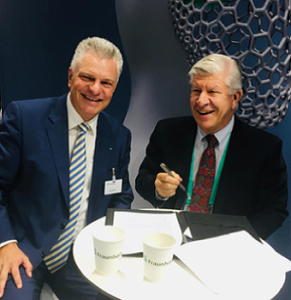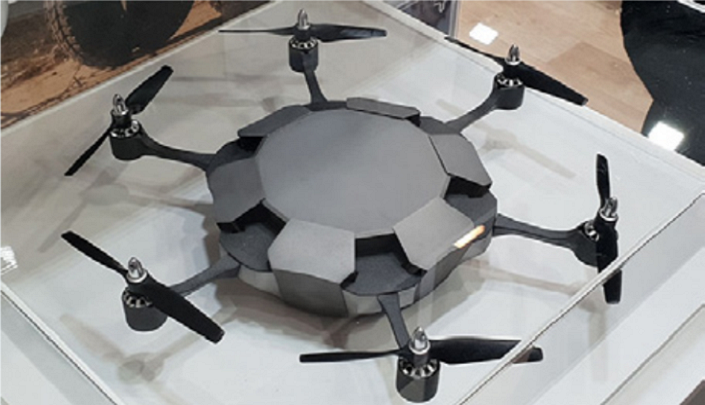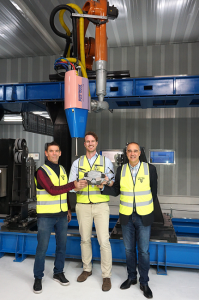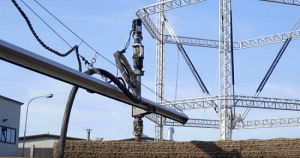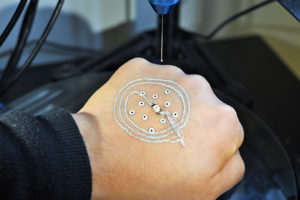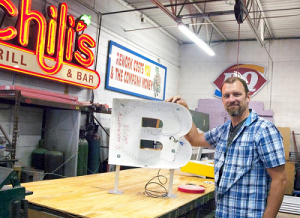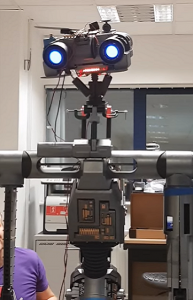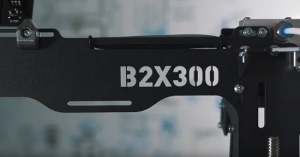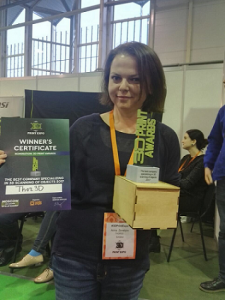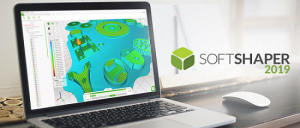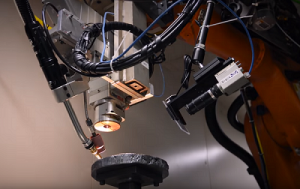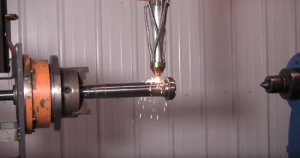We’re sharing stories about events, business, and metal 3D printing in today’s 3D Printing News Briefs. To start, the second annual Iran 3DShow is coming up, along with IQPC’s fifth Additive Manufacturing for Aerospace & Space event in London. Moving on to business, Carbon has an announcement about a new executive, Sigma Labs has joined an R&D collaboration with Fraunhofer IAPT, and Xometry is now offering instant quotes on parts 3D printed with HP’s Multi Jet Fusion technology. Finally, Markforged is presenting a closer look at the process behind the Metal X.
Second Annual Iran 3DShow
 Last year, the country of Iran hosted its first 3D printing trade show, originally called the Additive Manufacturing Symposium before the name was changed to Iran 3D Show. Now, the country is gearing up for the second annual event, which will be held at the Book Garden in Tehran from December 5-7. The Vice-Presidency for Science and Technology of Iran is holding the event, with the Iran Institute of Additive Manufacturing acting as the execution team and organizer. There will be a 3D printing competition for teachers and students, and the trade show itself is made up of three additional sub-events, called “The 2nd Exhibition of 3D Printing Industry.”
Last year, the country of Iran hosted its first 3D printing trade show, originally called the Additive Manufacturing Symposium before the name was changed to Iran 3D Show. Now, the country is gearing up for the second annual event, which will be held at the Book Garden in Tehran from December 5-7. The Vice-Presidency for Science and Technology of Iran is holding the event, with the Iran Institute of Additive Manufacturing acting as the execution team and organizer. There will be a 3D printing competition for teachers and students, and the trade show itself is made up of three additional sub-events, called “The 2nd Exhibition of 3D Printing Industry.”
“This event is not only good for the ones who are trying to observe the market here, but also suits the international companies to join and involve,” said Seyyed Amir Ghaffari, the Managing Director of Iran 3D Show.
Fifth Additive Manufacturing for Aerospace & Space
 Aligned to support the UK’s national AM strategy, the fifth Additive Manufacturing for Aerospace and Space conference by IQPC will be held in London from February 26-28, 2019; last year the forum was hosted in Munich. The conference helps attendees take on the roadblocks to adopting 3D printing and other industrial digitalization practices. The event provides content that helps 3D printing users exploit economic returns and performance gains provided by the technology. In addition, Airbus will be hosting a visit to its nearby Space Systems facility during the conference.
Aligned to support the UK’s national AM strategy, the fifth Additive Manufacturing for Aerospace and Space conference by IQPC will be held in London from February 26-28, 2019; last year the forum was hosted in Munich. The conference helps attendees take on the roadblocks to adopting 3D printing and other industrial digitalization practices. The event provides content that helps 3D printing users exploit economic returns and performance gains provided by the technology. In addition, Airbus will be hosting a visit to its nearby Space Systems facility during the conference.
“Now entering its 5th year, the conference has fast established itself as the premium forum for AM users, R&D experts and industry partners within the aerospace and space industry,” Olivia Timmins, Senior Marketing Manager for IQPC, told 3DPrint.com. “This year is no different with expert speaker line up from Thales, MTC, ESA, Airbus, Safran and more.”
If you register by Saturday, December 15th, you can even save up to £300 of the total cost.
Carbon Announces New Company Executive
Silicon Valley-based Carbon has announced a new executive, as Dara Treseder joins the company as the Chief Marketing Officer (CMO). The former CMO for GE Business Innovations and GE Ventures, Treseder is charged with finding new ways to showcase the company’s story at scale; with her excellent record, this should not be too challenging. This year, Treseder, who is also the co-founder of consulting firm NeuBridges, was featured by Forbes as a CMO Next, and in 2017, she was recognized on AdAge as one of the Women to Watch and by Inc. as one of the 30 Inspirational Women to Watch in Tech. Additionally, she is a sought-after speaker and writer on many subjects, including marketing, growth, innovation, and creating more diverse workplaces.
“I am deeply inspired by Carbon’s vision and values and excited to be part of a trailblazing team that is redefining digital manufacturing and creating the industry’s future. As chief marketing officer, I am looking forward to advancing Carbon’s brand, strengthening our customer connections, and rapidly scaling our global growth,” Treseder said.
Treseder is coming on board as Carbon works to strengthen its leadership team, and will support the growing company’s mission to keep driving the manufacturing industry’s digital transformation.
Sigma Labs Partners with Fraunhofer IAPT
This week, the Fraunhofer Research Institution for Additive Manufacturing Technologies (IAPT) and Sigma Labs, Inc., which provides quality assurance software under the PrintRite3D brand, announced a new collaborative research and development agreement that will focus on the industrialization of additive manufacturing. At last month’s formnext 2018 in Germany, John Rice, the CEO of Sigma Labs, and Prof. Dr.-Ing. Claus Emmelmann, the Managing Director of Fraunhofer IAPT, signed the joint agreement. As part of the agreement between the two, Sigma Labs will be upgrading Fraunhofer IAPT’s current PrintRite3D system.
“The aim of this collaboration is to test and validate the use of the PrintRite3D system to identify and quantify machine and process inconsistencies as well as flag defect thermal signatures during the laser melting process, and correlate them to CT scan results. Ultimately, this will allow users to reduce scrap, increase productivity and reduce post-process inspection costs,” said Rice.
Xometry Offering Instant Quotes on Multi Jet Fusion Parts
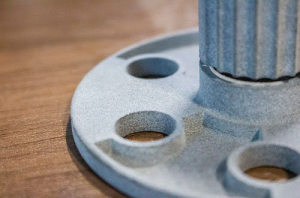 On-demand manufacturing platform Xometry has only been in business for five years, but it is releasing news at a fast clip. This summer, the company also introduced a new version of its Instant Quoting Engine, which included several new and enhanced features to offer customers instant quotes for CNC machining, sheet metal fabrication, urethane casting, and several 3D printing processes, including SLS, FDM, PolyJet, and DMLS.
On-demand manufacturing platform Xometry has only been in business for five years, but it is releasing news at a fast clip. This summer, the company also introduced a new version of its Instant Quoting Engine, which included several new and enhanced features to offer customers instant quotes for CNC machining, sheet metal fabrication, urethane casting, and several 3D printing processes, including SLS, FDM, PolyJet, and DMLS.
Now, Xometry has announced that it will be offering instant quotes on custom parts made with HP’s fast Multi Jet Fusion technology. As always, simply drag and drop your 3D models into the Instant Quoting Engine, select your process and materials (if you so choose), and Xometry will do the rest, analyzing the model’s geometry and providing an instant price, design feedback, and delivery date.
Markforged Metal X 3D Printer Process
 Last winter at CES 2017, Markforged introduced its Metal X, which is the company’s first 3D printer to leverage its Atomic Diffusion Additive Manufacturing, or ADAM, metal 3D printing technology. This spring, Markforged began shipping the Metal X to customers and resellers, and announced early last month that it had shipped over 100 machines, with an expectation of doubling that number by the end of 2018.
Last winter at CES 2017, Markforged introduced its Metal X, which is the company’s first 3D printer to leverage its Atomic Diffusion Additive Manufacturing, or ADAM, metal 3D printing technology. This spring, Markforged began shipping the Metal X to customers and resellers, and announced early last month that it had shipped over 100 machines, with an expectation of doubling that number by the end of 2018.
As we get closer to the end of the year, and Markforged works to achieve this goal, the company is giving the world a closer look at the innovative process behind its Metal X, with the publication of a time-lapse video on YouTube that shows all seven steps of the process, starting with the actual 3D printing of a part, removing and washing it, and ending with part manipulation, in less than two minutes. Take a look at the video below to see it for yourself:
Discuss these stories and other 3D printing topics at 3DPrintBoard.com or share your thoughts in the Facebook comments below.


